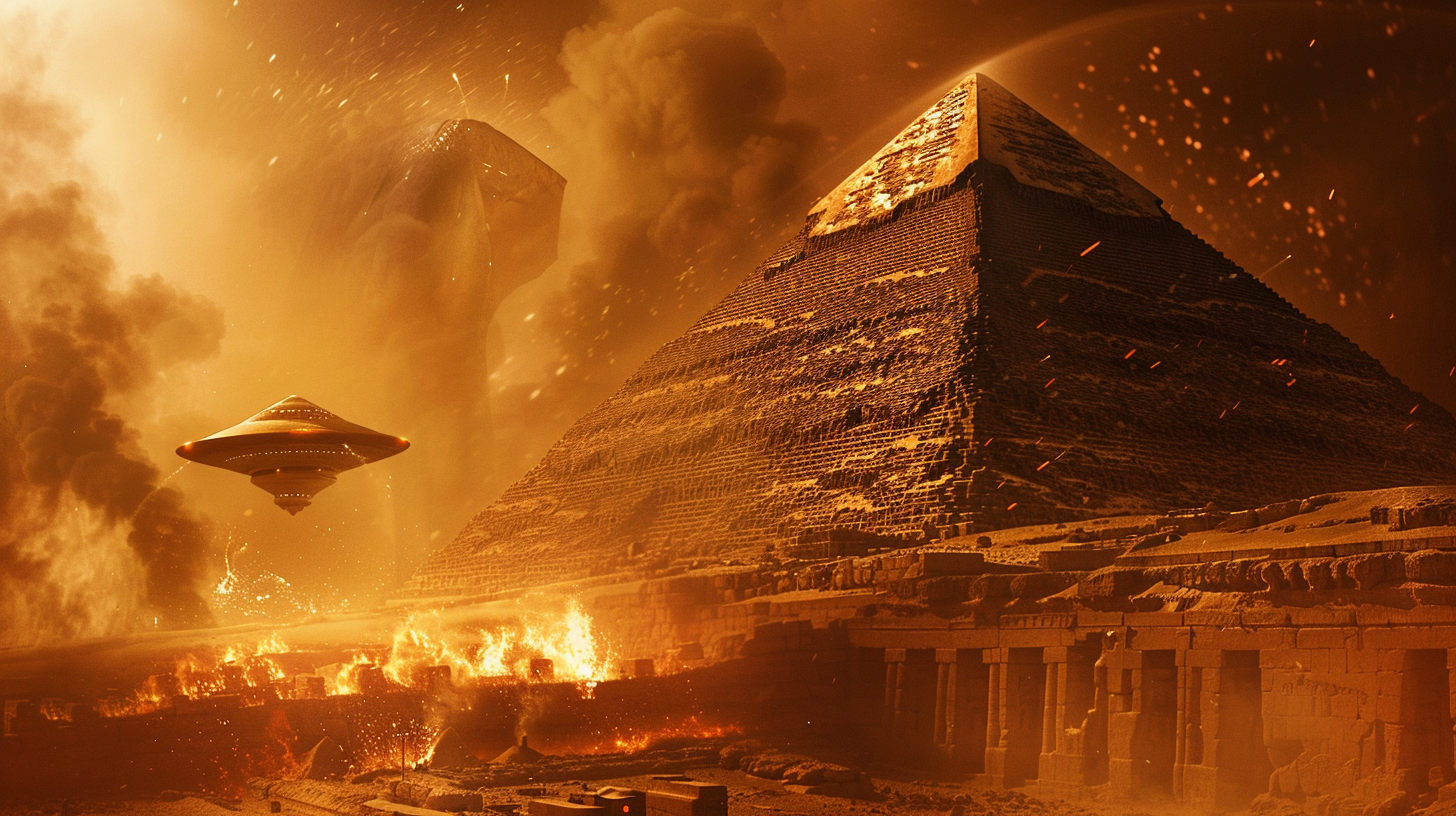In the annals of ancient Egyptian history lies a curious document known as the Tulli Papyrus. This ancient text recounts a series of remarkable events involving fiery disks in the sky, raising intriguing questions about the possibility of ancient UFO sightings in Egypt. Let’s delve into the story of the Tulli Papyrus and explore the various interpretations surrounding this fascinating account.
The Tulli Papyrus, believed to date back to the reign of Pharaoh Thutmose III in the 15th century BCE, is one of the oldest known records of alleged UFO sightings in human history. According to the text, during the reign of Thutmose III, scribes reported seeing “circles of fire” in the sky, accompanied by strange phenomena such as “falling stars” and “flying circles.” These descriptions bear striking resemblance to modern accounts of unidentified flying objects (UFOs) or extraterrestrial craft.
One interpretation of the Tulli Papyrus suggests that the fiery disks described in the text may have been misinterpreted natural phenomena, such as meteors or comets. Ancient peoples often attributed supernatural or divine significance to celestial events, and it is possible that the sightings recorded in the papyrus were celestial occurrences that were misunderstood or embellished over time. However, some researchers argue that the detailed descriptions of the flying circles and their movements suggest a level of sophistication beyond simple astronomical phenomena.

Another interpretation of the Tulli Papyrus proposes that the fiery disks may have been extraterrestrial spacecraft visiting Earth. Proponents of this theory point to the precise descriptions of the objects’ movements and behaviors as evidence of advanced technology or intelligence. They argue that ancient civilizations, such as the Egyptians, may have had contact with beings from other worlds, leading to the sightings recorded in the papyrus. However, skeptics caution against attributing the sightings to extraterrestrial visitations without concrete evidence to support such claims.
Moreover, some researchers suggest that the Tulli Papyrus may have been a work of fiction or allegory rather than a literal account of historical events. Ancient Egyptian literature often contained symbolic or metaphorical elements, and it is possible that the sightings described in the papyrus were intended to convey deeper philosophical or religious concepts rather than literal encounters with UFOs. Without additional corroborating evidence, the true meaning of the Tulli Papyrus remains open to interpretation.
In conclusion, the story of the Tulli Papyrus offers a fascinating glimpse into the ancient world’s encounters with celestial phenomena. Whether viewed as evidence of ancient UFO sightings, misunderstood natural phenomena, or symbolic allegory, the papyrus reminds us of the enduring mystery and complexity of human history. Regardless of its interpretation, the Tulli Papyrus continues to captivate the imagination and inspire further inquiry into the mysteries of the cosmos.

15 thoughts on “Decoding the Accounts of the Tulli Papyrus: Ancient Egyptian Encounters with Celestial Phenomena”
Comments are closed.